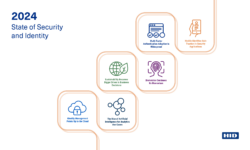Majority of U.S. Workers Don’t Feel Entirely Safe in Their Buildings
A survey conducted by Honeywell also found that 29% of remote workers would quit before returning to a risky worksite.

Surveyed workers are most worried that building management will not consistently enforce health and safety guidelines (49%), followed by worry that they won’t consistently invest in new technology to make working in-person safer (26%).
ATLANTA — Honeywell (NYSE: HON) has released the results of a comprehensive study on workers’ perceptions and feelings on the health and safety of their workplace.
Conducted by Wakefield Research, the study surveyed 500 workers (Nov. 19-Dec. 1, 2020) who typically work in buildings with 500 or more employees across the United States and was part of a global study in at total of four markets.
The findings show that a staggering majority of the U.S. workforce (71%) does not feel completely safe working in their employer’s buildings. This number is even higher for those working remotely (82%), who are especially skeptical about the safety of work sites. In fact, nearly 3 in 10 remote workers (29%) would look for a new job rather than return to a site that did not implement necessary safety measures.
“Workers are keenly attuned to the steps employers are taking to make their workspaces safer and healthier, especially when it comes to air quality and adherence to safety guidelines, which wasn’t previously a concern for some people,” says Vimal Kapur, president and CEO of Honeywell Building Technologies. “Air quality, for example, is not something that will be dismissed once we’re on the other side of this pandemic. It will be essential to the occupant experience, and good air quality will help make workers feel more comfortable as they return back to their offices.”
The surveyed workers’ concerns echo the latest scientific research on the spread of COVID-19, with 59% of those being more concerned about transmission through the air than through contact with a surface.
In terms of what poses a bigger threat to their safety, 64% point to co-workers not following safety guidelines and 36% believe outdated ventilation systems. C-level and executive-level workers are more likely to recognize the threat of poor air quality with nearly half (47%) of those surveyed indicating outdated ventilation as a bigger threat.
Nearly half of U.S. surveyed workers (48%) agree that their building management has not taken the steps necessary to keep them safer on the job, and 61% believe their building is more likely to make short-term changes in response to the pandemic versus long-term investments in building systems.
Surveyed workers are most worried that building management will not consistently enforce health and safety guidelines (49%), followed by worry that they won’t consistently invest in new technology to make working in-person safer (26%).
“Many facilities have made changes to their procedures but have not invested in the building itself and their occupants have noticed,” Kapur says. “Workers are going to demand more from buildings in the future, and we’re even seeing with these survey results that creating a healthier and safer environment will be a differentiator for staff retention and recruiting, and it may also impact long-term real estate value.”
To return to work and feel safer, U.S. surveyed workers view health safety protocols such as social distancing or mandatory masks as most critical (57%), and, in fact, 61% of those working on-site have seen such updates happen. Other top health and safety measures that surveyed workers want include health screening protocols such as temperature checks (49%), enhanced cleaning procedures (45%), updated air quality systems (28%), touchless door entries (28%) and technology for contact tracing (19%).
To view the full report, go here. Registration is required.
This article first appeared in SSI sister publication Campus Safety.
If you enjoyed this article and want to receive more valuable industry content like this, click here to sign up for our FREE digital newsletters!

Security Is Our Business, Too
For professionals who recommend, buy and install all types of electronic security equipment, a free subscription to Commercial Integrator + Security Sales & Integration is like having a consultant on call. You’ll find an ideal balance of technology and business coverage, with installation tips and techniques for products and updates on how to add to your bottom line.
A FREE subscription to the top resource for security and integration industry will prove to be invaluable.













